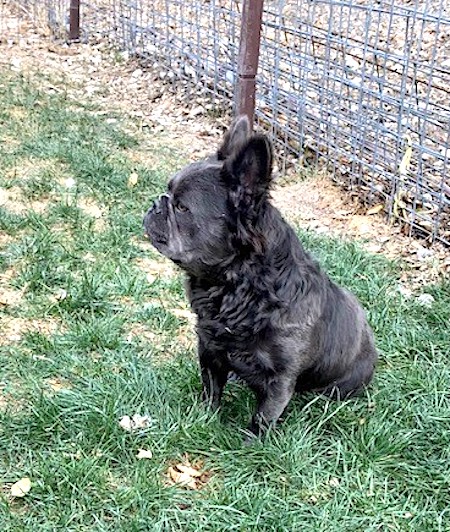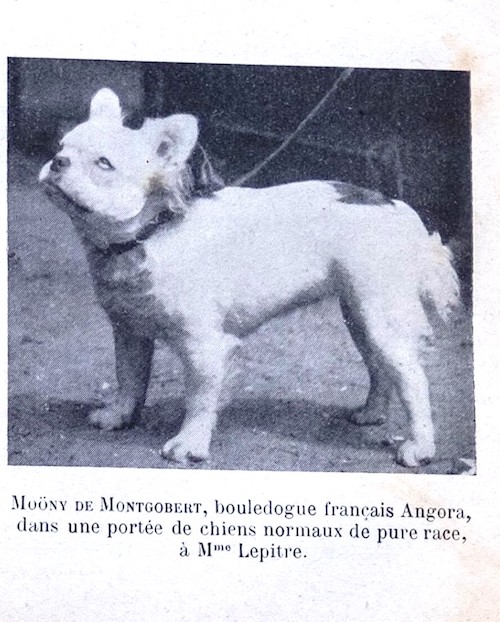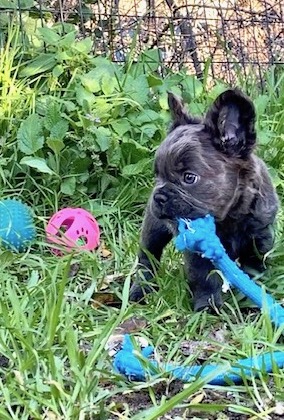FLUFFY ANGORA FRENCH BULLDOGS
 (our home bred boy Superstition. See him as a puppy below)
(our home bred boy Superstition. See him as a puppy below)
WHAT CROSS WAS USED TO CREATE A LONG HAIRED FRENCH BULLDOG? Certainly they must be a cross? A gene can't just hide in their DNA.... Can it?
well.....YES IT CAN!!! AND IT DID!!!
I am so excited to say that we now have proof that shows that the long hair gene has been in French Bulldog genetics from the beginning! Let me introduce you to.....
The Angora French Bulldog!

This picture was discovered in a book called Le Bouledogue Français from 1933! Look at that beautiful fluffy!!!!
So....Why haven't we been seeing Angora Bulldogs this entire time? Well, Im not exactly sure. In 1911 the French Bulldog Club of America was pressed into changing its standards from allowing all colors to allowing only dark brindles. Stupid, right? But money and power talk so the club basically did what it was told to do. This act may have included the hair length as well. Unfortunately, and as disgusting as I find this, many breeders will kull any puppies born that do not fit the breed standards so it’s possible there have been long-haired French bulldogs born throughout the decades but they were killed by their breeders to hide what they considered an imperfection. As the decade passed, it is also likely that additional long hair alleles were introduced 30 or so plus years ago when people were trying to introduce other colors and patterns such as merle. The majority of animals crossed to bring in the merle pattern were long haired dogs. (This is also my opinion as to where the original testable chocolate 'b'gene came in from as the majority of merle dogs known as “red merle “ are actually (testable) chocolates, as in the red merle Australian Shepherd’s for example. Not saying people used Australian Shepherd’s to bring in the merle pattern but using this as an example as ‘red’ technically does not really exist in many breeds and it is actually a testable 'b' chocolate).
 Truth of the matter is, we may never know exactly where all of our little long-haired genes and alleles came from but it was first documented in this breed almost 100 years ago!!!
Truth of the matter is, we may never know exactly where all of our little long-haired genes and alleles came from but it was first documented in this breed almost 100 years ago!!!